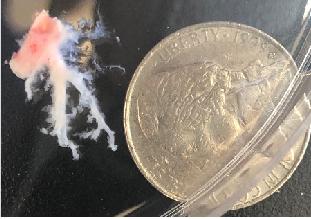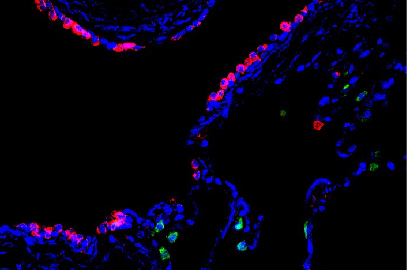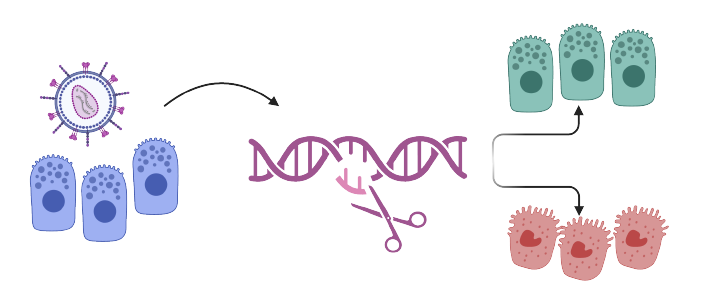Learn about the type of things we ponder in the Basil Lab!
Our laboratory is interested in untangling the molecular mechanisms that regulate progenitor and stem cell biology in the lung. The lung is often considered a "quiescent" organ, but it actually has an amazing regenerative capacity!
We have a special interest in the smallest human airways, the respiratory airways. These are a site of injury in many lung diseases, but they do not exist in small animal models. We have shown that this region is the site of a novel human lung progenitor population, Respiratory Airway Secretory Cells (RASCs).
Our focus in the respiratory airways has led us to explore and develop novel model systems to interrogate human lung biology. We take a multifaceted approach by incorporating next-generation sequencing, stem cell modeling, primary human organoids, large animal modeling, and more. We are interested in all aspects of progenitor cell biology including transcriptional regulation, clonal relationships, injury responses, and regenerative capacity.
We take a curious and innovative approach to our science - read below to learn about some of the projects we are working on currently!
View the full list of publications.
Development of the postnatal human lung
During post-natal lung development, the lung undergoes immense growth and organization. The human respiratory airways are forming during this time! To study this rapid growth and expansion in the human lung, we are using primary tissue samples, large scale transcriptomics, high resolution imaging, and advanced analytic approaches.
By understanding how the lung can undergo such immense growth and reorganization, we hope to learn about molecular processes that we can harness for lung regeneration and shed light onto how this region is affected in pediatric pulmonary diseases, such as Bronchopulmonary Dysplasia.

Respiratory Airway Cell Fate
Respiratory Airway Secretory Cells (RASCs) are a newly identified progenitor population in the distal airways of the human lung. We are interested in multiple aspects of RASC function, with a particular focus on how these cells respond to injury and participate in lung repair and regeneration. Since these cells are not found in mouse models we use several tools to study how these cells function including human embryonic stem (ES) cell modeling, primary cell organoids, and even large animal models.
Our goal is to understand how these progenitors cells interact with their surrounding support cells, how these cells and their relationships are altered in disease, and how these changes impact progenitor function.

Transcriptional Regulation of Respiratory Airway Secretory Cells
How do transcriptional regulators affect cell fate? progenitor capacity? cellular function? We are working toward understanding the transcriptional regulation of human lung progenitor cell fate and function using embryonic stem (ES) cell models, CRISPR-Cas9 technologies, and epigenetic analysis.
Our goal is to develop a better understanding of the gene regulatory networks that impact cellular function in the human lung, how these are disrupted in injury, and how we can harness that information to treat lung disease.

Novel treatment paradigms for COPD
We are interested in bridging the gap between our bench work and the clinical realities that patients with COPD face - a lack of disease understanding, a paucity of information on how to individualize care, and a dearth of novel therapies.
Towards that goal we are actively exploring how we can use basic science to inform how we think about COPD. As we move towards an era of personalized medicine in health care, we need to continue to reconsider how we can move from the bench to the bedside and back again to find creative solutions for the millions of patients with COPD worldwide.
We are part of the COPD-iNET network, where like-minded researchers work towards these goals together.


